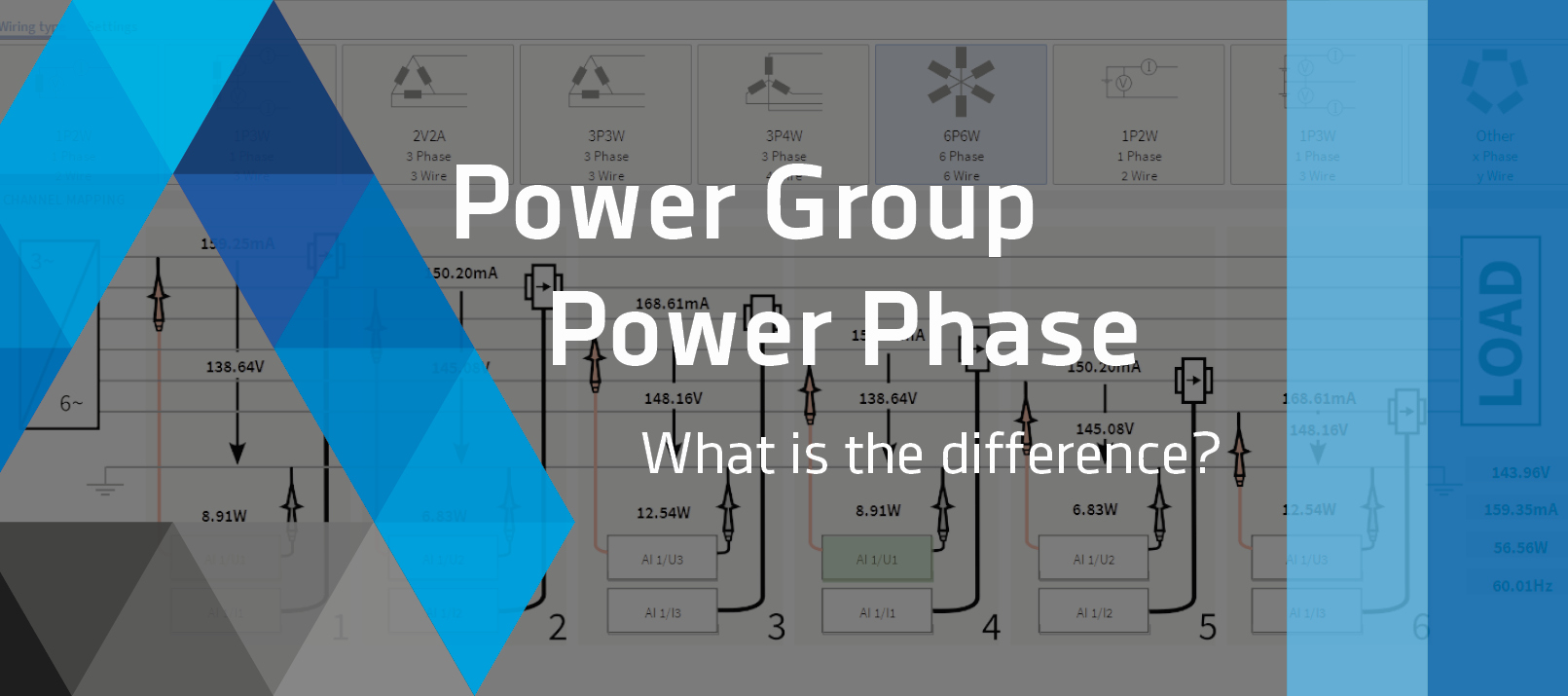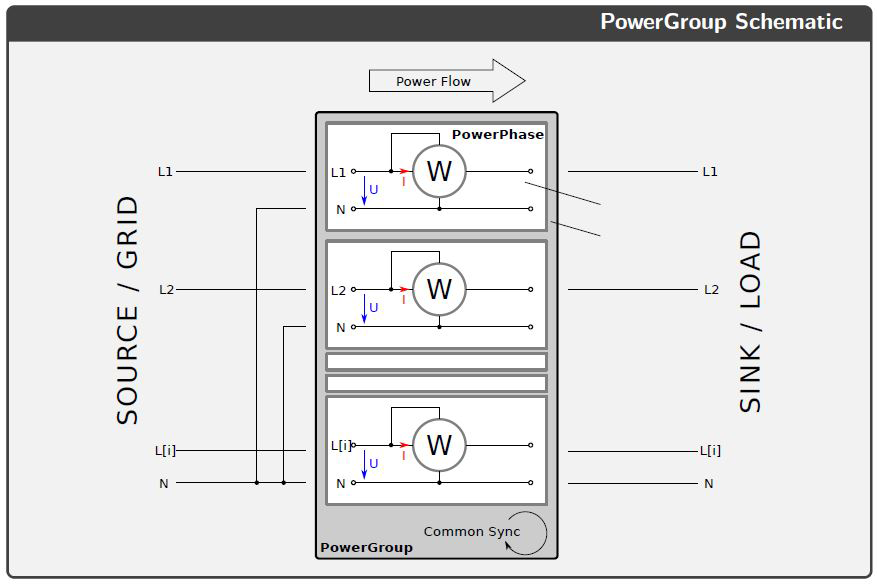What is the difference between power groups and power phases?

In today’s blog post, we briefly explain what three-phase power is and describe the essential differences between power groups and power phases. Further, we discuss their implementation in our measurement software OXYGEN using DEWETRON’s Power Analyzer. Learn more about how our systems can drive your power analysis.
What is three-phase power?
Three-phase power systems are the common method for the generation, transmission, and distribution of power. Although there is a clear trend for poly-phase (>3) engines, the three-phase engine is still the most used engine.
For the generation of three-phase power, three chokes are located apart from each other at an angle of 120°. Depending on the position of the poles within the magnetic field, the electrons move in different directions in at least two chokes. Electrons are moving back and forth in all three lines. This does not always happen in accordance with the direction and speed of the other two lines. For every cycle, there are three positive and three negative peaks. This is because only one of the three lines can reach its peak current at one time.
What are power groups and power phases?
When we talk about Power Analysis, we don’t only mean the analysis of voltage and current magnitude, active power, and reactive power. We mean additionally the analysis of harmonic, flicker, and voltage fluctuation as well as the mechanical power analysis. This is important to get a complete picture of your device under test.

For power analysis, it is essential to differentiate between power phases and power groups. What we call a Power Group is a wiring type or connection schematic of one or several power phases (i.e., three-phase Line-Line connection) within the power analysis option in our measurement software OXYGEN. Power phases are voltage-current pairs building a power system like a generator or motor.

Analyzing a power group, each power phase is evaluated individually as well as synchronously with the entire power group. Furthermore, each power group has a common basic frequency, also called Common Sync. It can be determined from any voltage or current signal. This makes it possible, for example, to compare the power of the inverter to the power of the three phases of the motor, with both power groups synchronized to one voltage. In addition, the input signals can be measured as a delta connection, even if the motor or the DUT has a star connection.
DEWETRON’s Power Analysis
The Power Analysis Feature in OXYGEN provides the analysis of 1-9 phase power systems. The user can select from different predefined wiring schematics, i.e. 1P2W, 2V2A, 3P3W, 3P4W, or 2 x 3P3W. Different power phases can be logically summarized into so-called power groups (= power systems).
Also, our implemented power analysis provides basic features like voltage, current RMS, AVG, fundamental and symmetrical components, active/reactive/apparent power (total and fundamental), and energy. The analysis of harmonics (IEC 61000-4-7), flicker (IEC 61000-4-15), flicker emission (IEC 6140-21), and mechanical power/efficiency can be proceeded within the advanced features. If the grid compatibility of renewable energy generators like wind turbines shall be evaluated, the expert option is the right add-on.
The Power Analysis option of our data acquisition software OXYGEN is the core feature of our PA-series devices. But it also turns any other DEWETRON measurement device into a fully featured Power Analyzer. Furthermore, our measurement software offers many additional useful functions and tools. For a list of all available features and more detailed information see the link below:
OXYGEN – our intuitive measurement software!





